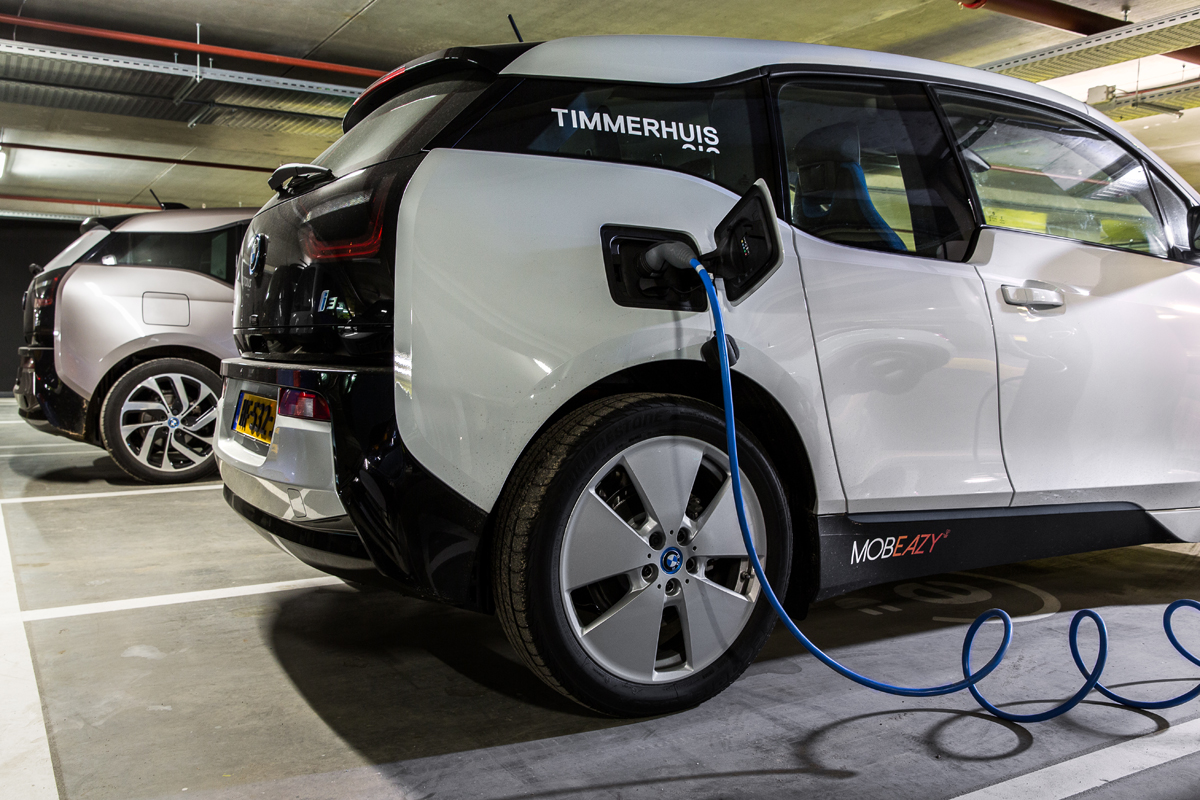Timmerhuis, Rotterdam
The iconic building reimagined by architects, city government, a construction firm and a car company


The Dutch city of Rotterdam is perhaps the perfect place for an architect who wants to explore what can be done in the field of green housing. Rotterdam—which was bombed heavily during the Second World War—has little architectural heritage to protect. This led to a slew of new, innovative buildings in the city, as architects have more freedom to create and experiment without being bound by the style of the surrounding buildings. “Rotterdam embraces the new because it has no choice. There is no cohesion in the city to spoil, because it has already been spoiled,” architect Reinier de Graaf puts it. Add to that the fact that Rotterdam has long been plagued by air pollution, though is now working to clean up its air and environment, and you have a combination that allows for some really interesting architectural, ecologically friendly work.

The latest addition to the city is the iconic Timmerhuis, which has been re-imagined by OMA, Dutch architect Rem Koolhaas’ firm, and designed by de Graaf. The building was originally built in 1950 to replace one destroyed in bombings, and part of the old design has been incorporated into OMA’s striking new creation, which was envisioned as a floating cloud of steel and glass. “Timmerhuis was designed five-six years ago as part of a competition,” de Graaf says. “The original brick building plays an important part in its design, which is reminiscent of a stack of shipping containers—a nod to Rotterdam’s history as a major port city. We wanted the building to combine urban living with the feel of a garden.” This has been accomplished by designing the blocks so that the roofs of some blocks create gardens, and terraces for others—in effect giving the building multiple rooftop spaces.

The ease with which Timmerhuis can be taken apart is another sustainable aspect of the building. “The whole building has a steel structure that allows it to be built quickly,” de Graaf says. “It’s easy to assemble and can be disassembled very fast. It also features atriums in its center, which helps store heat.” Timmerhuis has been given the BREEAM Excellent Sustainability Certification, and is the most sustainable multifunctional building in the Netherlands. Part of the building (floors one to five) will be the workplace for 1,800 employees of the municipality of Rotterdam, while floors six to 14 will house 84 apartments. It also has an underground parking garage that holds electric BMW i3 cars that the residents can use, and the German car company is a vocal supporter of the project.

The Netherlands already has almost 17,000 charging posts for electric vehicles, and is at the forefront of the change to this cleaner transport mode. BMW’s Vice President of Governmental and External Affairs, Thomas Becker, says, “We have to invest heavily in new technology to stay future-proof, as electrical vehicle sales are going up. Ultimately, it’s the governments at city level that create the market for these products.” And in Rotterdam, the government is as supportive as it gets. Paula Verhoeven, the General Director of the Department of City Development in Rotterdam, says: “Rotterdam today is a collaborative effort—the city can only develop and become successful with real partnerships in place. Cities have to deal with climate change.”

The result of this collaboration between architects, city government, a car company and a construction firm (Heijmans; also an investor in the building) could potentially become a blueprint for how to create eco-friendly buildings in the future. As de Graaf tells us, “When something like this is successful, it becomes part of future regulation.”
The Timmerhuis opens tomorrow, 11 December at Meent 119, 3011 JH Rotterdam.
Images courtesy of OMA; photography by Ossip van Duivenbode, image of car courtesy of BMW












